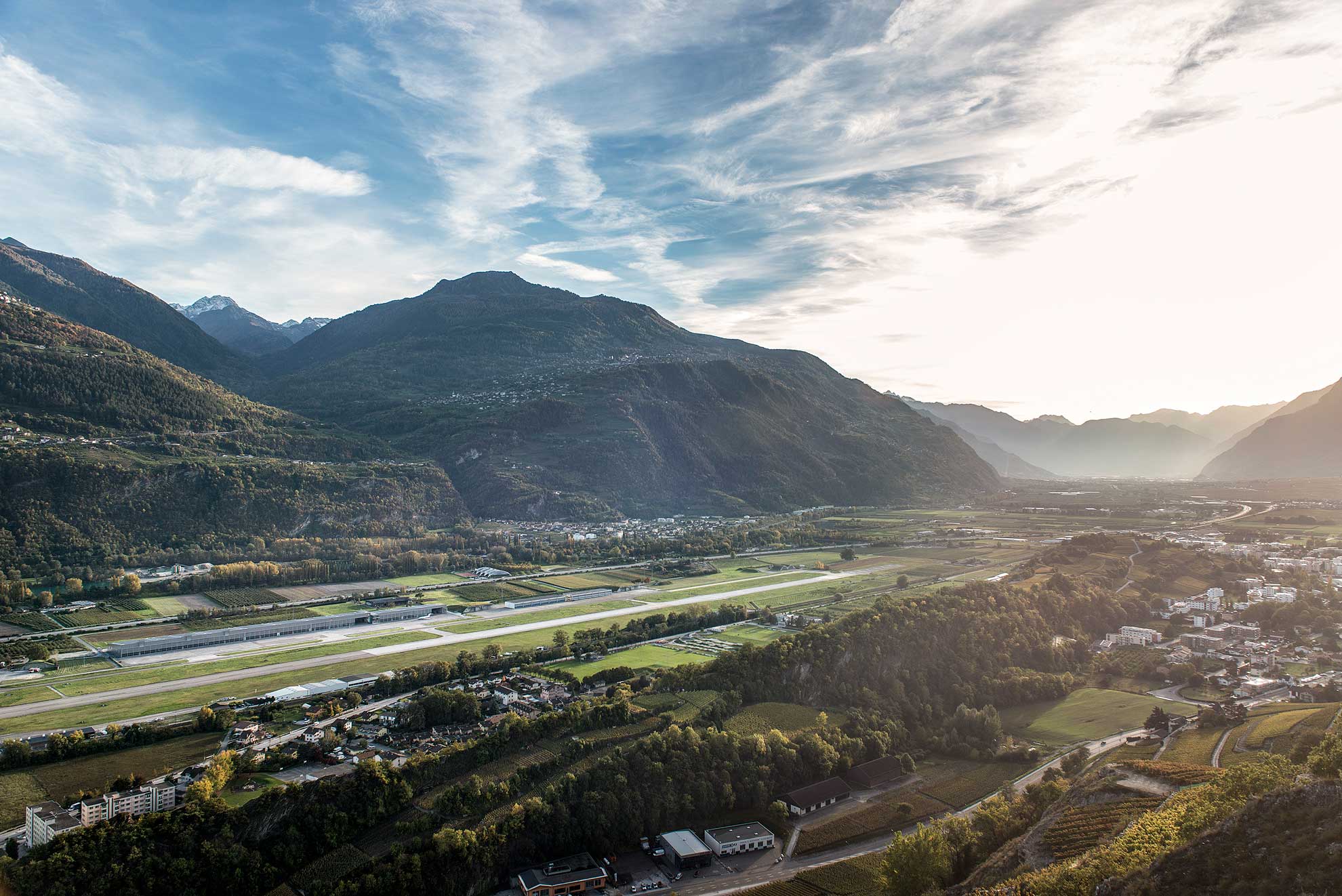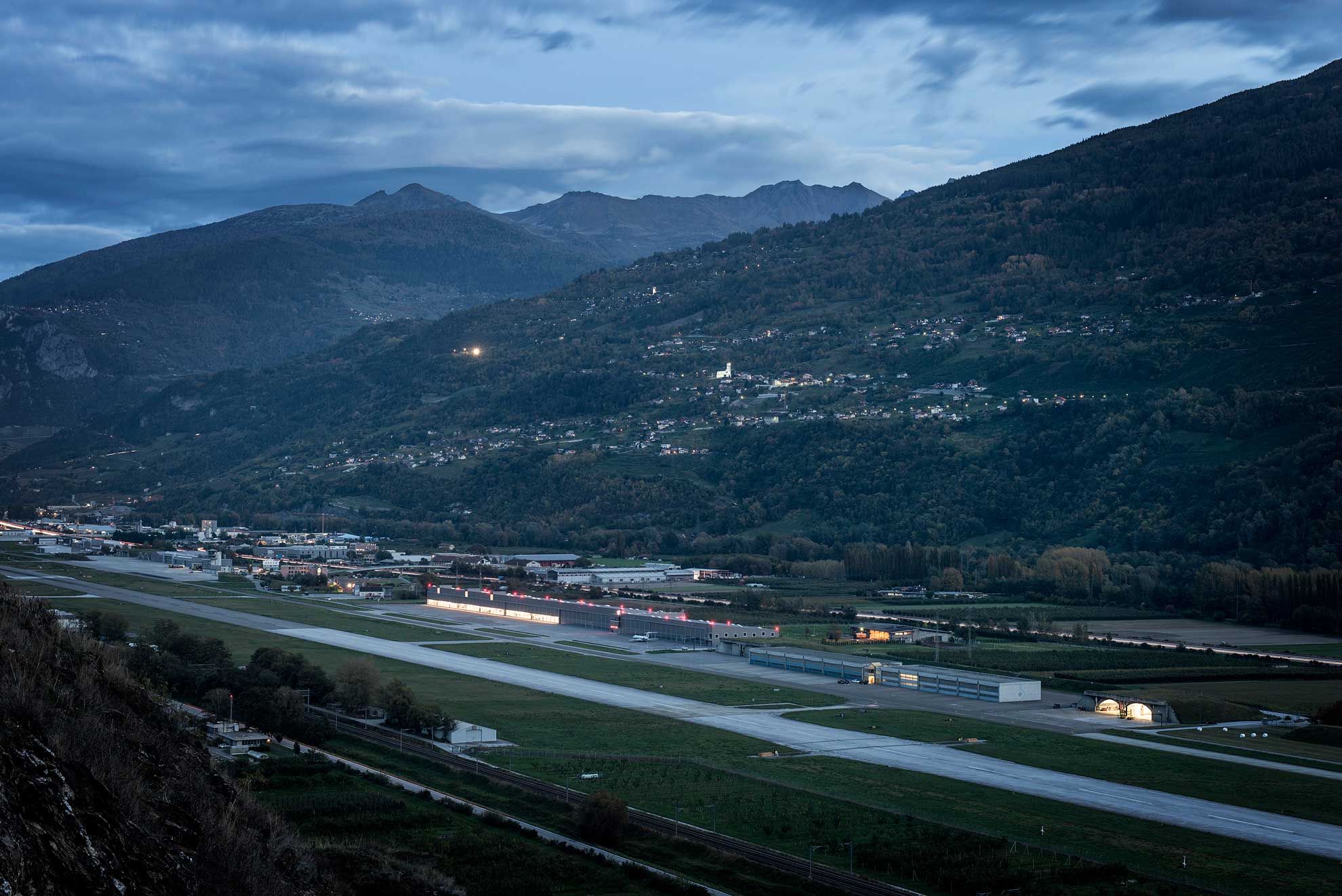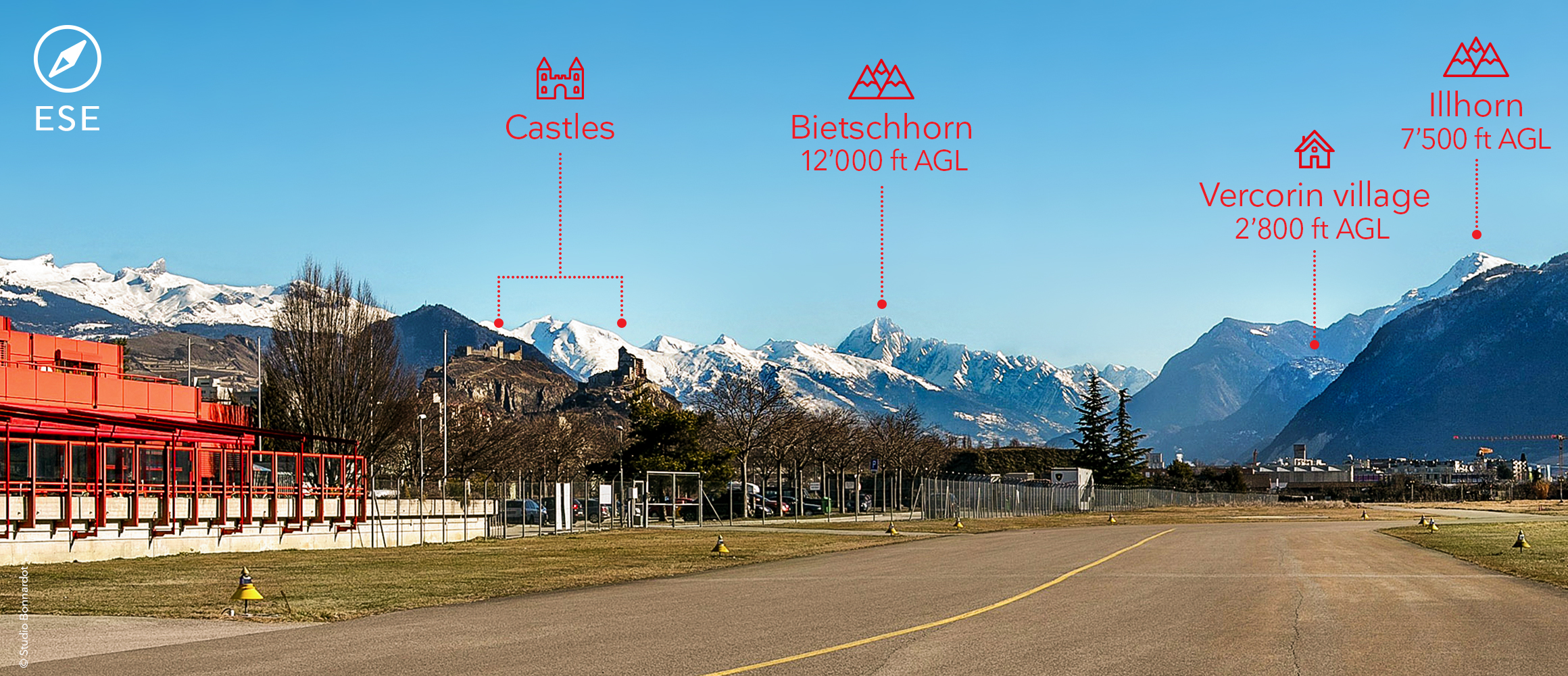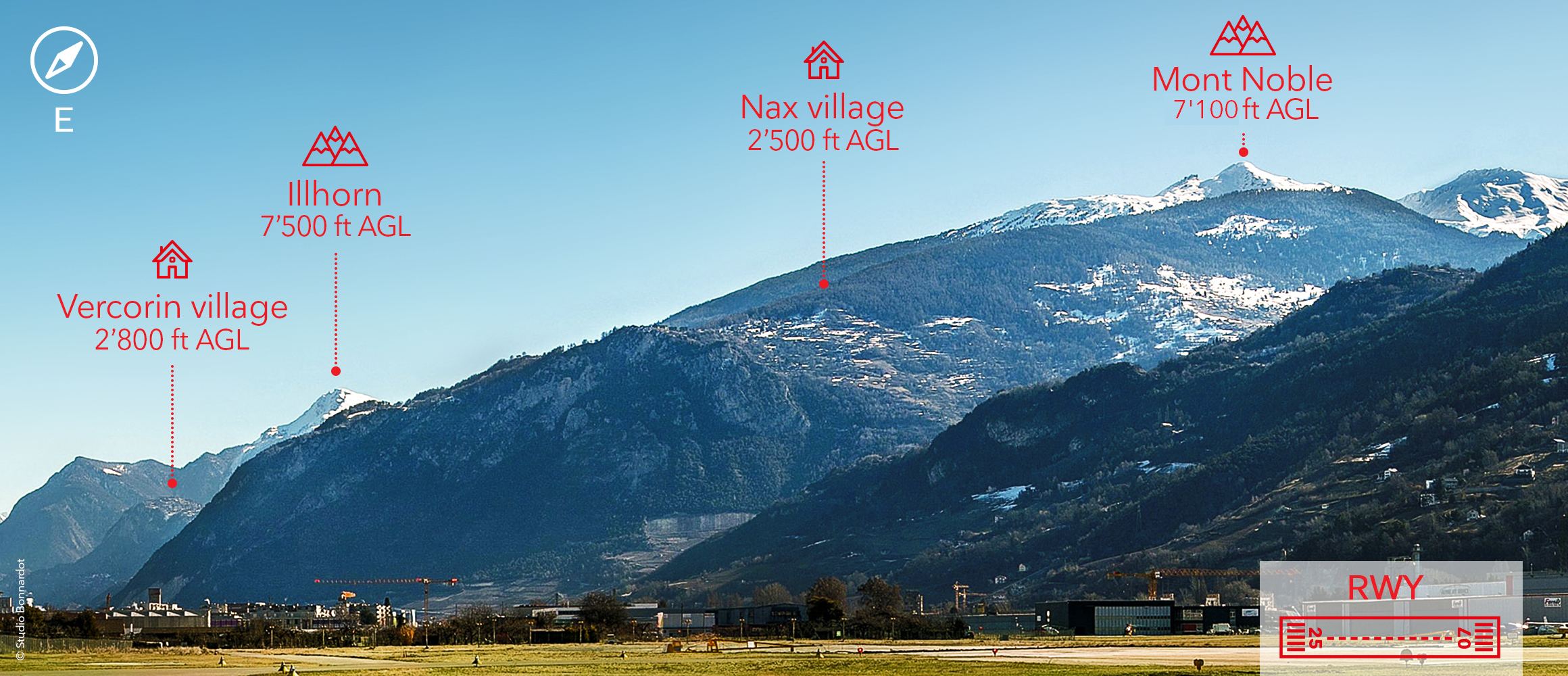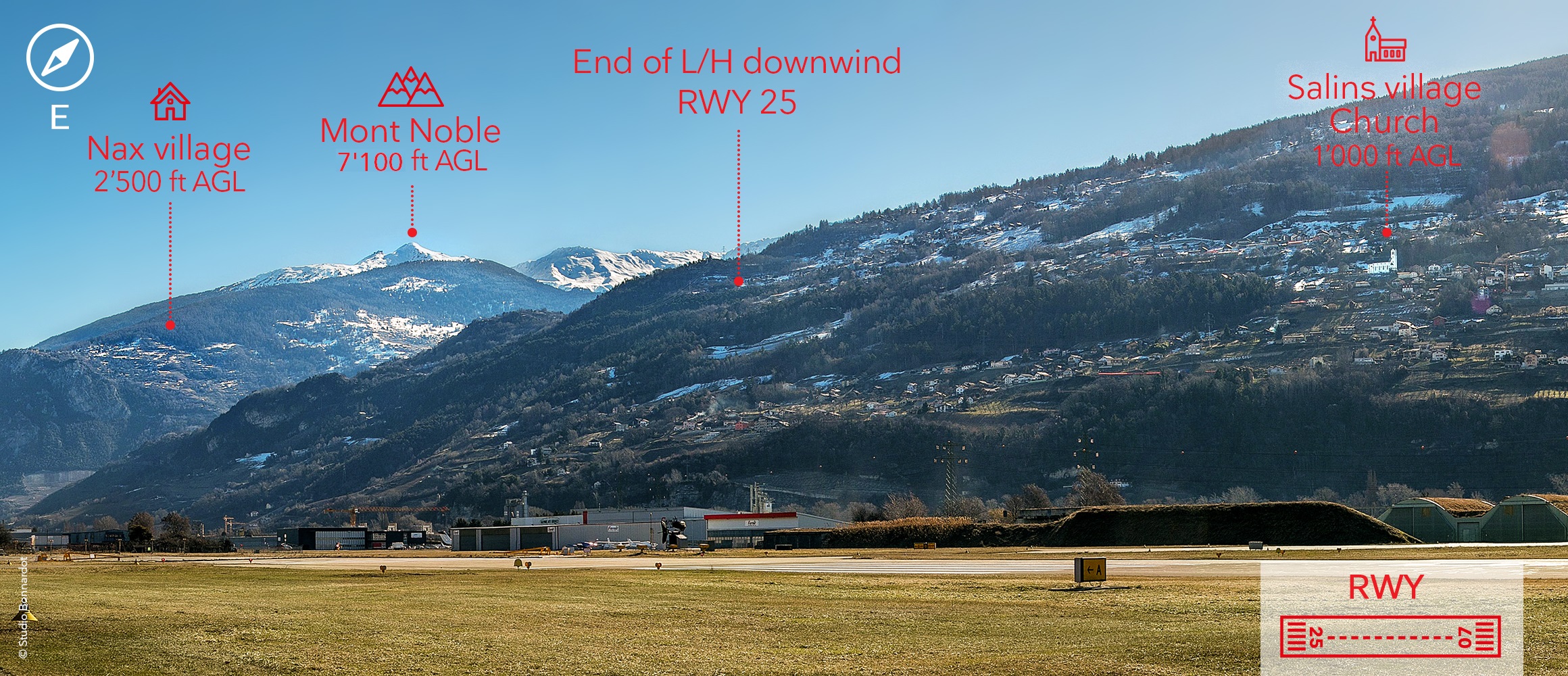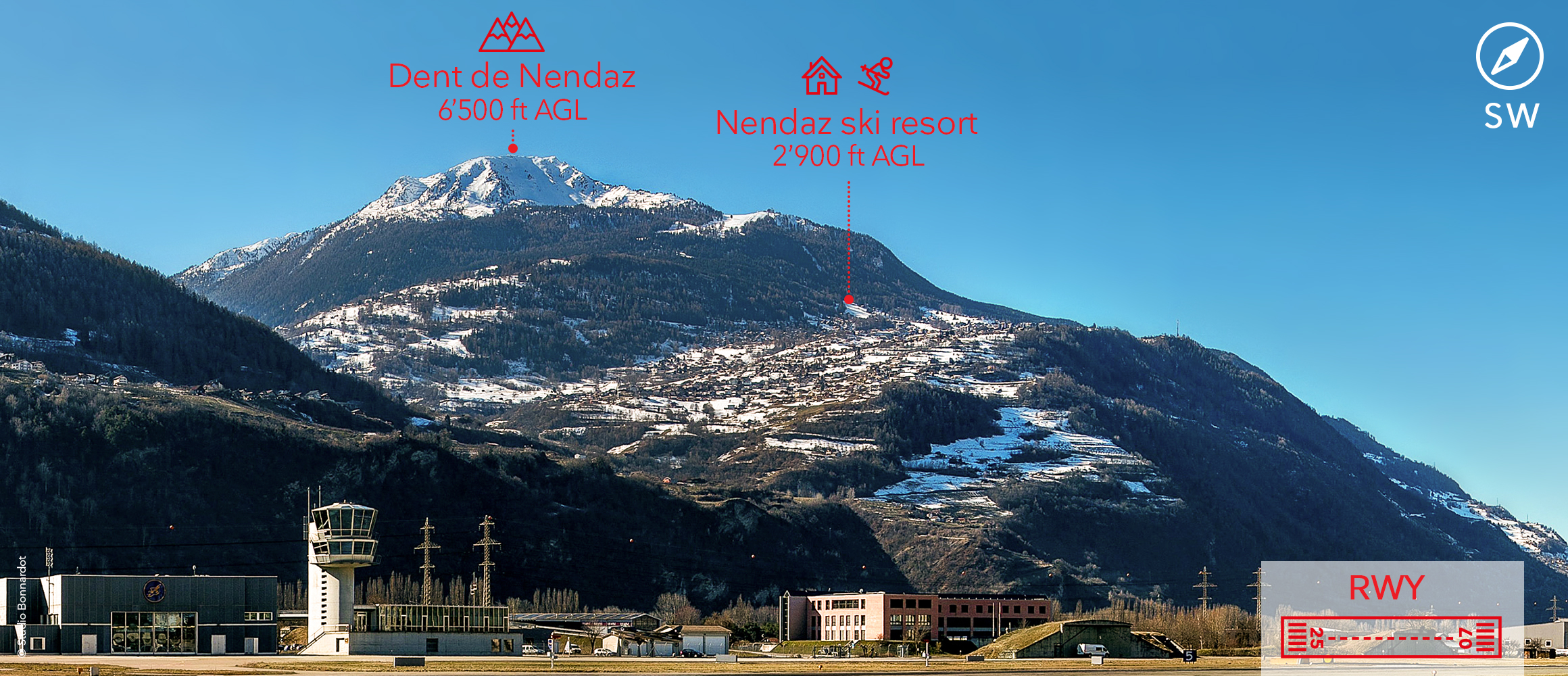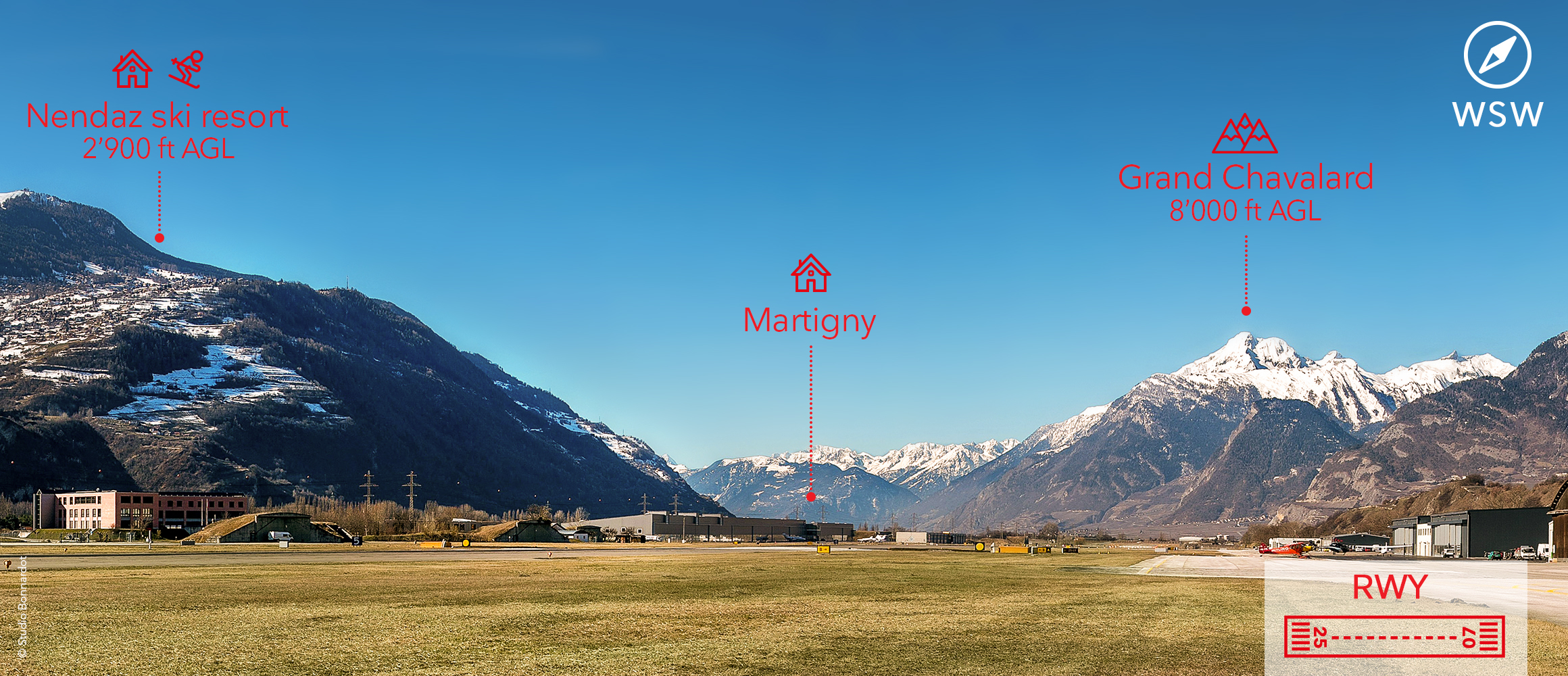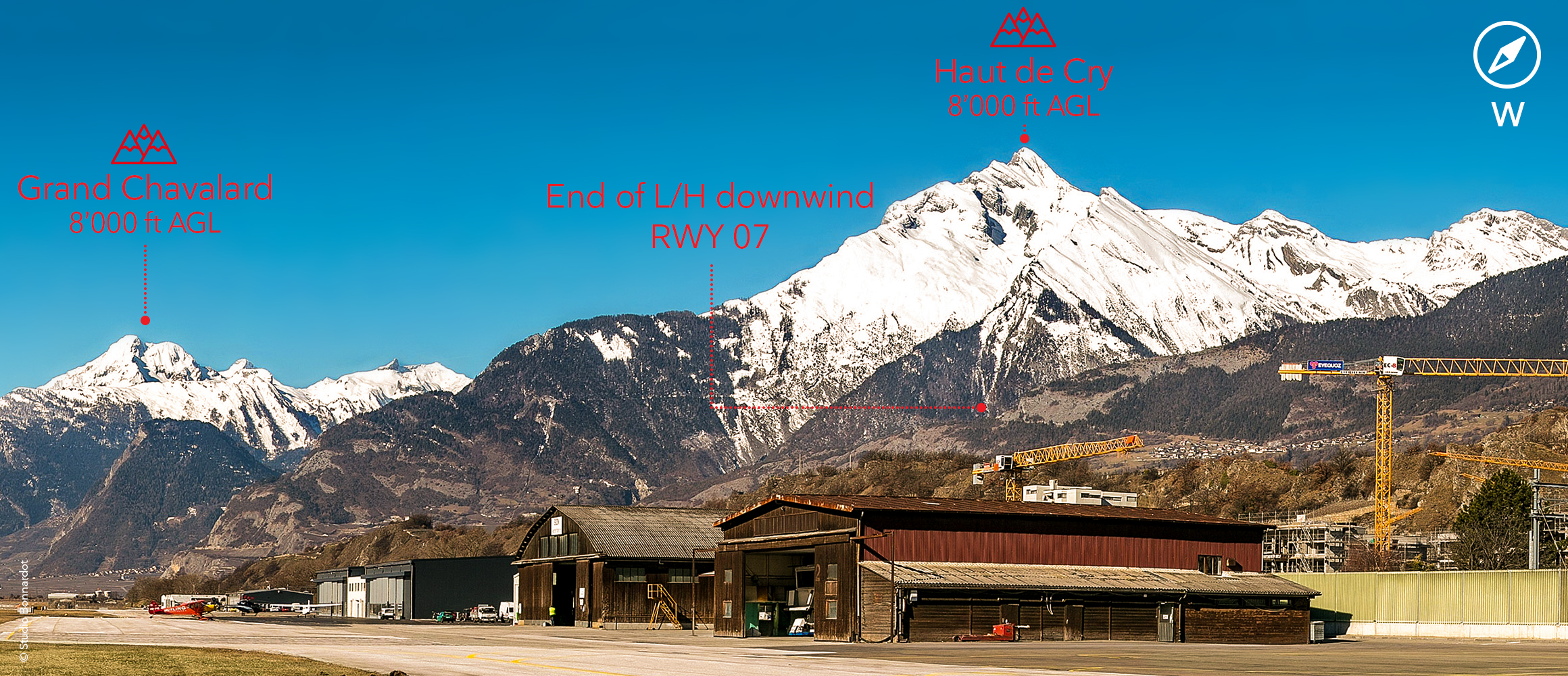Authorization levels
There are basically 2 different authorization levels given by the Sion Airport Authority:
- The Airport qualification A (more restrictive): DA 8’000 ft AMSL, day use only
- The Airport qualification B : DA lower according to aircraft category.
Find below the details of the different authorizations:
1) Airport qualification A
Download

AIP LSGSTo get the Airport qualification A, the flight crew shall study the airport briefing and successfully complete the online application exam via www.sion-qualification.ch.
Limitations
IFR Arrival :
VIS 8 km
Ceiling 6’500 ft AAL
Day only
IFR Departure :
LOW PERFORMANCE SID RNAV via GS300:
VIS 8 km
Ceiling 7’400 ft AAL – VFR to GS300
Day only
HIGH PERFORMANCE SID RNAV:
VIS 5 km
Ceiling 6’500 ft AAL
Day only
2) Airport qualification B
To get the Airport qualification B the operator or the pilot shall contact Sion Airport Authority:
Sion Airport Authority
Route de l’aéroport
CH-1950 SION
Switzerland
Phone: +41 27 329 06 00
Fax: +41 27 329 06 16
E-mail: aeroport@sion.ch
Internet: www.sionairport.ch
SITA : SIRAPXH-SIRKKLX
AFTN : LSGSZPZX
AFTN : LSGSYDYX
To achieve this authorization, the pilot must successfully complete the training, either on the aircraft or in an approved simulator :
Fly7 Training, Lausanne, Switzerland
FlightSafety, Paris le Bourget, France
FlightSafety, Farnborough, United Kingdom
FlightSafety, Teterboro, NJ, USA
FlightSafety, Wilmington, DE, USA
FlightSafety, Dallas, TX, USA
FlightSafety, Savannah, GA, USA
FlightSafety, Wichita East, KS, USA
CAE, Amsterdam, Netherlands
CAE, Dubai, UAE
CAE, Burgess Hill, United Kingdom
Star Wings, Dortmund, Germany
Alpha Aviation, Praha, Czech Republic
Lufthansa Aviation Training, Zurich, Switzerland
European Flight Simulator Training Centre, Aéroport Cannes-Mandelieu, France
AAA Aviation Academy Austria, Vienna, Austria
SIMCOM Aviation Training, Orlando, FLA, USA
For all other Flight Training Centers, please contact our instructor in charge for the Sion Airport Pilot Qualification, Mr. Pascal BUTHEY – p.buthey@sion.ch
